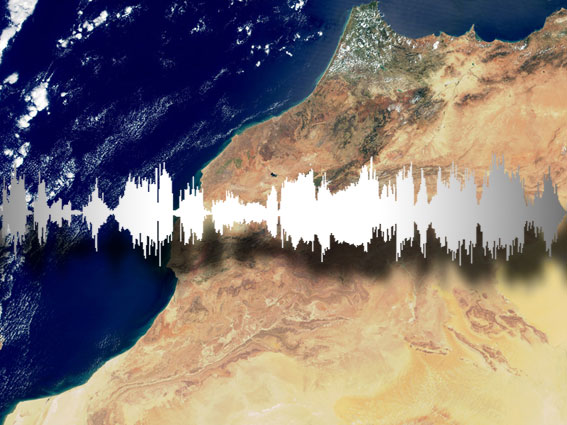Official Language: Algeria, Chad, Djibouti, Egypt, Libya, Mauritania, Morocco, Somalia, Sudan, Tunisia, Bahrain, Gaza Strip, Iraq, Israel, Jordan, Lebanon, Kuwait, Oman, Qatar, Saudi Arabia, Syria, United Arab Emirates, Yemen
Home Speakers: Ethiopia, Mali, Niger, Nigeria, Turkey
also in France as an important immigrant language.
Background
Arabic is one of the world’s major languages, spoken in a broad belt extending from the Arabian Peninsula on to the Atlantic Ocean. It is the official language and the home language for over 280 million and 140 million people respectively in Africa and Asia (including the Middle East). Arabic belongs to the Afro-Asiatic family, Semitic group, south-western subgroup (Arabian branch). With the rise of Islam as a dominant religion after AD 622, Arabic became the most widespread of the living Semitic languages. The earliest written inscriptions in Arabic are found in the Arabian Peninsula and date from the early 4th century AD. The diverse colloquial dialects of Arabic are interrelated but vary considerably among speakers from different parts of the Middle East and among urban, rural, and nomadic speakers. In this respect, there are two main varieties, comprising a dozen important dialects: “Mashreq” (Eastern) in Arabia, Iraq, Syria, Lebanon, Jordan, Israel, Egypt, Sudan, Chad and part of Libya; “Maghreb” (Western) in Morocco, Mauritania, Algeria, Tunisia, and part of Libya. For writing and high-level speech (e.g. radio and TV news), however, people use Standard Arabic, which is much closer to Classical or Koranic Arabic, the sacred language of nearly 900 million Muslims throughout the world. The Arabic alphabet is believed to have evolved from that of an ancient people known as the Nabateans, but how, when, and where exactly it originated is still a matter of controversy. By the early Islamic period two scripts were in use: the Naskhi, the ordinary cursive form used in books and correspondence, and the Kufic, an angular script used mainly for decorative purposes. The present alphabet of twenty-eight letters consists basically of consonants, the vowel signs being indicated by marks above or below the letters. Like the other Semitic languages, Arabic is written from right to left. The script is employed in many other languages, such as Persian, Pashto, Urdu, and Sindhi.
Reprinted from www.unhchr.ch/udhr/

